
MarvinB
-
Posts
66 -
Joined
-
Last visited
Content Type
Profiles
Forums
Articles
Gallery
Downloads
Events
Posts posted by MarvinB
-
-
13 hours ago, Steve Sells said:
what am I missing? looks fine
It was slick almost polished rite before I quenched it and came out with deep gouges and metal swirls in it
-
Lol Irondragon i like that one
-
-
-
So how does everyone keep there work space organized im looking for ideas what i got going just is not working lol
-
Nice thanks for sharing
-
12 hours ago, Steve Sells said:
I have an assignment I am working on that those thin strips will be perfect for, its the JPH MAD 6 mix M2+A2+D2 for a coal fired pattern weld...when I get this to work I am keeping it just for principle
Sweet that's gonna be a tough one be real interested in seeing how it turns out
-
On 5/3/2017 at 8:55 AM, Steve Sells said:
I will buy it..
I've got plenty, alot actually - be glade to sell or trade ya
-
19 hours ago, Steve Sells said:
I will buy it..
Steve Sells that'll be fine don't want to get rid of it all but if you would like some just let me know
-
6 hours ago, ThomasPowers said:
Fillet knives are generally known for their flexibility something D2 does not excel at.
Note that if you have a number of them they would make good trading stock to get other alloys for at a conference.
D2 already has very high carbon content but as mentioned previously it is tied up in various carbides.
D2 is not a beginner's alloy. D2 is not a beginner's alloy. D2 is not a beginner's alloy. D2 is not a beginner's alloy.
You seem to want to force it to be something it is not and use skills you do not have yet to do so. Trade if for some large bandsaw blade to make fillet knives from or to weld up into billets.
Well im not a beginner but i dont know alot about D2 and the reason i suggested making filet knives from these is because there really flexable and before its said that these may not be D2 i assure you they are 100% positive
4 hours ago, Gergely said:Okay, I can't let it be untold, even it is cheesy to say
 :
:
Please don't bother with those irritative alloys! Keep only the 4140 and send me the A2 and S7 I will know how to dispose them correctly...

Back to serious, Thomas is very much right! D2 is not fun to forge. You can hardly move it, it's almost sure you'll mess it while forging, and if you don't you'll mess it while heat treating it. My experience shows that even HSS is easier to forge and HT than D2 like alloys.
A2 and S7 has their own problematic sides. If you're a beginner it's better wait a bit till you acquire some experience on the basics. 4140 is way more forgiving material to start with. When you have the knowledge to use your own setup to heat and heat treat tool steels give it a go.
Bests and happy hammering:
Gergely
Well me being who i am im gonna try to forge weld it and will do so till i figure it out lol and i dont know of any other way to heat or heat treat other than my own setup
-
22 hours ago, Gergely said:
If the thickness of the stock allows it (thick enough, I mean) I think you can get the most of this material by stock removal. I have no personal experience forge welding D2 but based on its chemical composition it may not be the easiest to play with. - But why not try it anyway? - experimenting is fun

Bests:
Gerrgely
They are a 1/16 thick and most are only 4.5" long but they will make some nice electrician knives and there are a few longer ones the i may us for filet knives kinds thin but we will
-
Thanks guys for all the info and i do know that itll rust and itll stick right to a magnet
-
-
2 hours ago, BlasterJoe said:
Very cool file work. Some mean looking knives.
Thanks bro
-
-
33 minutes ago, Tubalcain2 said:
congrats. thats a good anvil. in good shape, too.
Thanks the face is in way better shape than my mousehole and I got a heck of a deal on it
-
Forgot to ask is there anyway to tell how old it is
-
-
I guess I shouldn't have called it a striking anvil that's not what it's being used for .I'm using it as my primary anvil and I don't need a hardy hole in it more than likely I want ever make any hardy tools but if I was to choose to us it as a striking anvil with large sledges I will. I'm completely comfortable doing it the entire anvil isn't hardend I'm sure it's probably a little harder than it was from the middle to the bottom the face took the heat and I watched it to make sure as it started glowing red it didn't make it past the half way point that way from the middle down through the legs wouldn’t be as hard as the face.I weld for a living and the way i welded it and the amount of weld it would take more than a few guys with sledge hammers to bust it they might give it a sway back like a ol broke down mare
-
Sorry guys should of Googled it first man did I ever over think this process it work hardens
-
Coin Mokume to use as a bolster I would think it would need to be hardened can someone tell me how this works
-
12 hours ago, JHCC said:3 hours ago, littleblacksmith said:
So, if you don't plan on making hardies, or making items that require a to use a hardy(s), than what are you planning on doing with that striking anvil?
Most striking anvils have hardy holes, and that was almost the hole reason I'm working on mine, is just so that I don't have to worry about snapping of the heal of my London pattern anvil, and also so its at the proper height. I'll be using the hardy hole for hardies (duh) such as the bottom fuller, hot cut hardy, cupping tool, large bottom fuller, and swages. Mainly for making hammers is what mine is going to be for.
The point (or at least I think) of a striking anvil, is so that it is soft. Especially for safety reasons, as I wouldn't trust my heat treating skills, or my strikers skills. With a missed blow on a hardened anvil could send a chip off flying like a bullet, and really mess somebody up. With a striking anvil all that happens is you dent it, which can be ground out or welded up. Two things that you don't want to do to a high carbon steel faced anvil, as it lessens the life of the tool.
Littleblacksmith
I made it because I don't really like my anvil not enough good working area.For me it was more cost efficient to make a striking anvil it cost me time no money at all and it be better to forge damascus
-
3 hours ago, JHCC said:
The hardy hole in a striking anvil isn't just to hold the various hardy tools, but also for making them. If you need to upset a piece of steel to make a fuller or a swage, it's better to use a striking anvil: it's lower and therefore at a better height for sledgehammering, and it's less likely to lose its heel to a missed blow. I have a Mouse Hole anvil as well, but I still made myself a portable hole.
I didn't think about that but if I ever need one I guess I'll just have to build one but as of right now I don't see any major sledge hammer swinging in my future
-
On Monday, December 05, 2016 at 1:23 PM, Latticino said:
Cool legs, and congrats on the successful heat treat. What size is the anvil and how did you accomplish your quench?
Just curious why you didn't bore a hardy and pritchel hole in it before hardening. Most of the striking anvils I've seen, including the one I've been working on for myself, have them. Also, it looks like you have welded multiple layers of 1/4" thick steel plate together around the perimeter. If this is the case I'd be interested in how it holds up to heavy striking without full penetration welds.
Realized I didn't answer ya about the hardy hole I have a mouse hole anvil with a hardy so didn't really need one in this
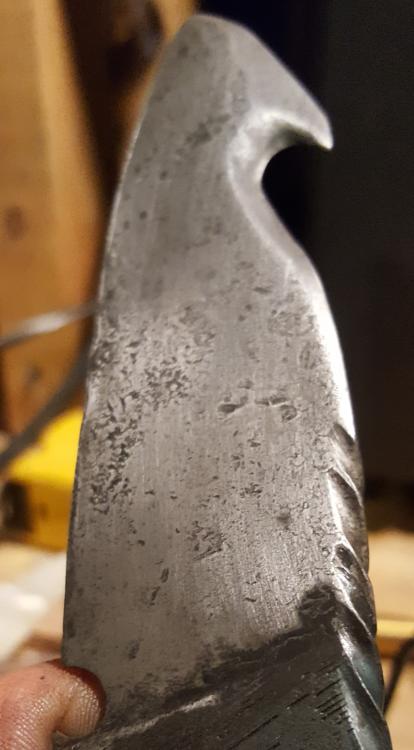
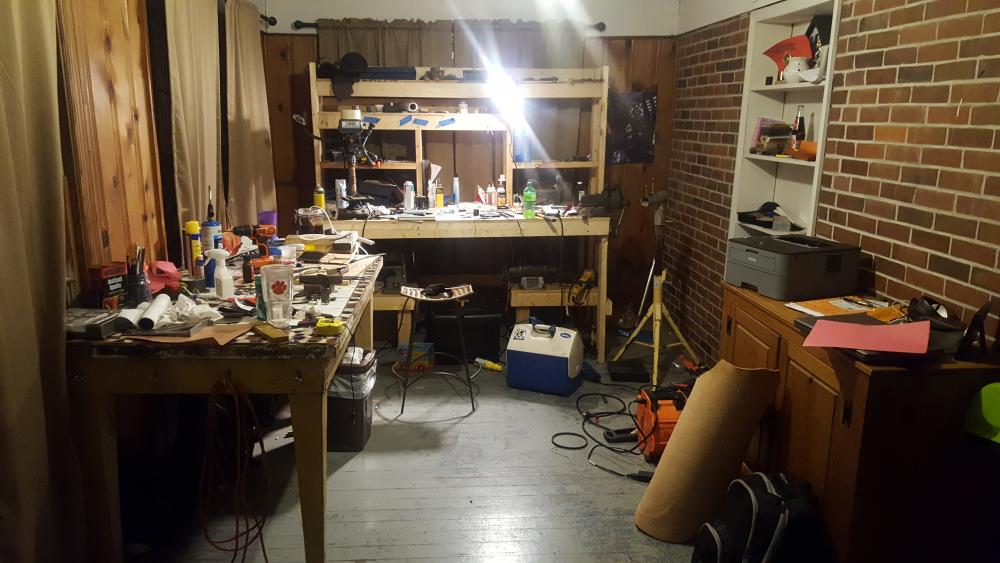
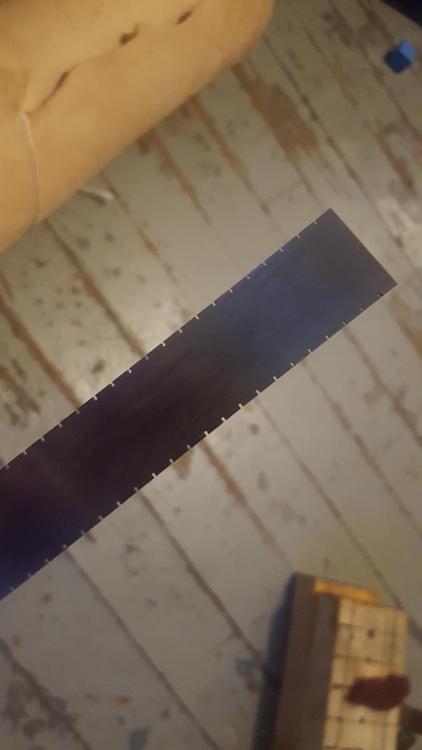

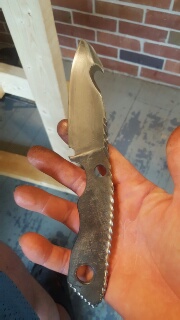
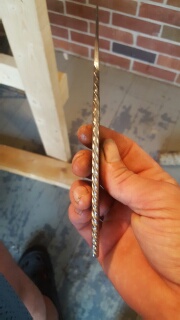
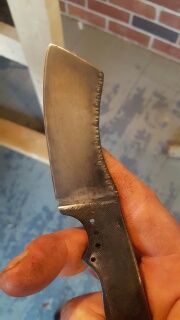
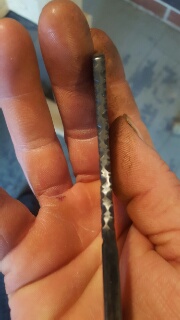
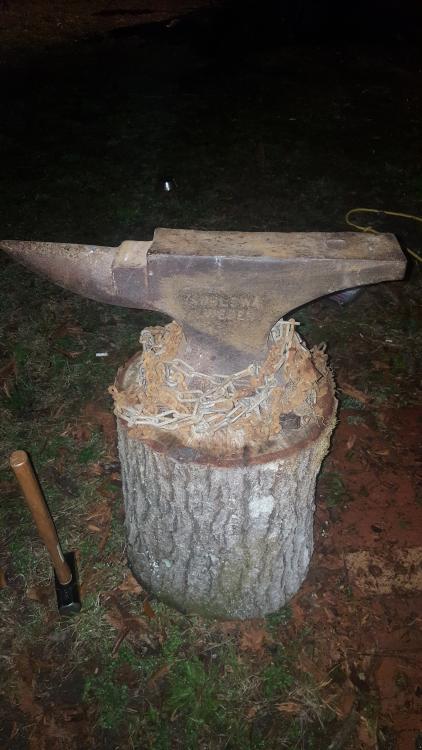
Forged In Fire Tests
in Knife Making
Posted
I haven't watched TV in 2 years but I came across another conversation about this what they said was the tempering goes on off camera because of time and the prosses isn't flashy enough for TV